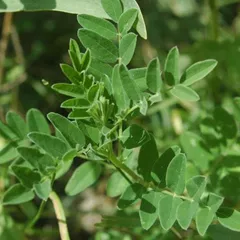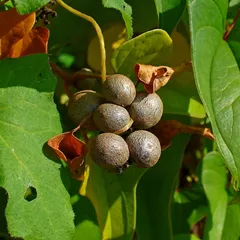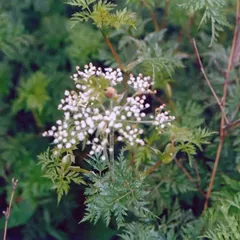Tao Hong Si Wu Tang
Tao Hong Si Wu Tang
Chinese: 桃红四物汤
Pinyin: Táo Hóng Sì Wù Tāng
Other names: Four-Substance Decoction with Safflower and Peach Pit
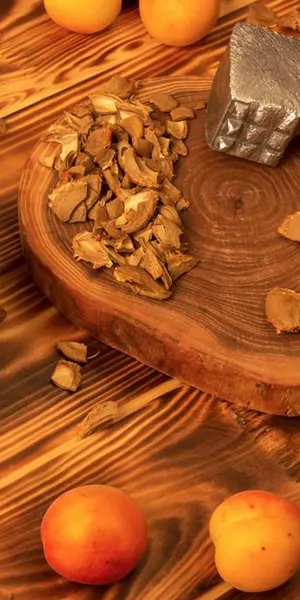
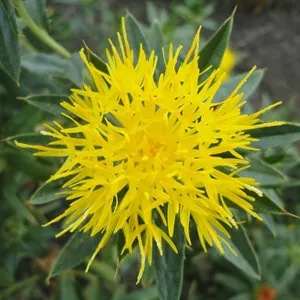
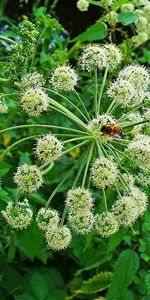
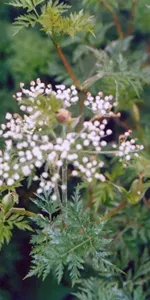
Tao Hong Si Wu Tang
Tao Hong Si Wu Tang
Chinese: 桃红四物汤
Pinyin: Táo Hóng Sì Wù Tāng
Other names: Four-Substance Decoction with Safflower and Peach Pit
Number of ingredients: 6 herbs
Formula category: Formulas that tonify Blood
Mother formula: Si Wu Tang
Conditions for which it may be prescribed: DysmenorrheaMenstrual crampsScanty menstruation and five other conditions
- Tonifies Blood and regulates the Liver
- Moves Qi and Blood in the lower abdomen
- Stops pain
Contraindications: This formula should not be used in treating acute, severe blood loss or other... This formula should not be used in treating acute, severe blood loss or other problems of blood deficiency characterized by severe weakness and labored breathing. see more
Source date: 1291 AD
Source book: Supreme Commanders of the Medical Ramparts
The information provided here is not a replacement for a doctor. You shouldn't use it for the purpose of self-diagnosing or self-medicating but rather so you can have a more informed discussion with a professional TCM practitioner.
Tao Hong Si Wu Tang is a 6-ingredient Chinese Medicine formula with Peach Kernels (Tao Ren) and Safflowers (Hong Hua) as principal ingredients.
Invented in 1291 AD, it belongs to the category of formulas that tonify Blood. Its main actions are: 1) tonifies Blood and regulates the Liver and 2) moves Qi and Blood in the lower abdomen.
In Chinese Medicine health conditions are thought to arise due to "disharmonies" in the body as a system. These disharmonies are called "patterns" and the very purpose of herbal formulas is to fight them in order to restore the body's harmony.
In this case Tao Hong Si Wu Tang is used by TCM practitioners to fight patterns like Blood Stagnation, Qi And Blood Stagnation or Blood Deficiency and Stagnation. From a Western Medicine standpoint, such patterns can give rise to a range of conditions such as scanty menstruation, abnormal uterine bleeding or menstrual cramps for instance.
On this page, after a detailed description of each of the six ingredients in Tao Hong Si Wu Tang, we review the patterns and conditions that Tao Hong Si Wu Tang helps treat.
The six ingredients in Tao Hong Si Wu Tang
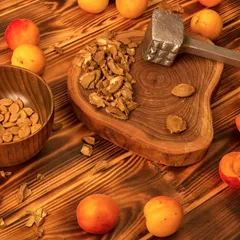
Tao Ren is a king ingredient in Tao Hong Si Wu Tang. Like the name indicates, it means it has more power than other ingredients in the formula.
1. Peach Kernels (Tao Ren)
Part used: Dried ripe seed
Nature: Neutral
Meridian affinity: HeartLarge intestineLiver
Category: Herbs that invigorate the Blood
Tao Ren tonifies and invigorates the Blood and regulates menstruation. Its use is for concurrent Blood Deficiency and Blood Stagnation leading to a shortened menstrual cycle with copious Bleeding of dark-purple, sticky Blood, with or without clots. Also used when menstruation is accompanied by abdominal pain and distention due to the same mechanism.
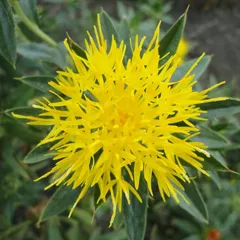
Hong Hua is a king ingredient in Tao Hong Si Wu Tang. Like the name indicates, it means it has more power than other ingredients in the formula.
2. Safflowers (Hong Hua)
Hong Hua it helps peach kernels (the other key herb here) tonify and invigorate the Blood and regulate menstruation.
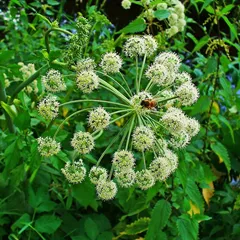
Dang Gui is a deputy ingredient in Tao Hong Si Wu Tang. This means it helps the king ingredient(s) treat the main pattern or it serves to treat a coexisting pattern.
3. Dong Quai (Dang Gui)
Part used: Dried root
Nature: Warm
Meridian affinity: HeartLiverSpleen
Category: Tonic herbs for Blood Deficiency
In general Dang Gui's main actions are as follows: "Tonifies the Blood. Lubricates the Intestines. Relieve constipation. Promotes circulation and dispels Bi Pain. Reduce Dysmenorrhea and help with irregular menstruation."
In the context of Tao Hong Si Wu Tang, it is used because it is warming and moistening. It enters the Liver and Heart to tonify and invigorating the Blood.
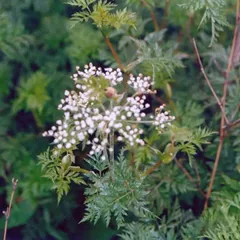
Chuan Xiong is a deputy ingredient in Tao Hong Si Wu Tang. This means it helps the king ingredient(s) treat the main pattern or it serves to treat a coexisting pattern.
4. Szechuan Lovage Roots (Chuan Xiong)
Part used: Dried rhizome
Nature: Warm
Taste(s): Pungent
Meridian affinity: GallbladderLiverPericardium
Category: Herbs that invigorate the Blood
Chuan Xiong invigorates the blood and promotes the movement of Qi. Above, it directs the Blood to the head, relieving symptoms like headache, dizziness, and blurred vision, while below, it moves the 'Sea of Blood' (the complex Blood system that is the Liver, the Penetrating vessel and the Womb). Overall, by facilitating the flow of Blood through the Vessels and Collaterals it releases constraint, opens knotting, and alleviates pain.
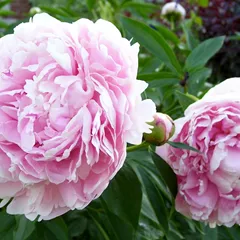
Bai Shao is a deputy ingredient in Tao Hong Si Wu Tang. This means it helps the king ingredient(s) treat the main pattern or it serves to treat a coexisting pattern.
5. White Peony Roots (Bai Shao)
Part used: Dried root
Nature: Neutral
Meridian affinity: LiverSpleen
Category: Tonic herbs for Blood Deficiency
Bai Shao tonifies the blood and preserves the Yin. Its sour and astringent character helps to settle the muscle spasms caused by Blood Deficiency, and it is particularly well-suited to treat abdominal pain.

Shu Di huang is a deputy ingredient in Tao Hong Si Wu Tang. This means it helps the king ingredient(s) treat the main pattern or it serves to treat a coexisting pattern.
6. Prepared Rehmannia (Shu Di huang)
Part used: Prepared dried root tuber
Nature: Warm
Taste(s): Sweet
Meridian affinity: KidneyLiver
Category: Tonic herbs for Blood Deficiency
Shu Di huang has a very strong tonifying effect on the Liver and Kidneys and is said to nourish the Yin of the Blood.
Conditions and patterns for which Tao Hong Si Wu Tang may be prescribed
It's important to remember that herbal formulas are meant to treat patterns, not "diseases" as understood in Western Medicine. According to Chinese Medicine patterns, which are disruptions to the body as a system, are the underlying root cause for diseases and conditions.
As such Tao Hong Si Wu Tang is used by TCM practitioners to treat three different patterns which we describe below.
But before we delve into these patterns here is an overview of the Western conditions they're commonly associated with:
Scanty menstruation Abnormal uterine bleeding Menstrual cramps Absence of menstruation Painful menstruations Dysmenorrhea Irregular menstruation Postpartum weakness
Again it wouldn't be correct to say "Tao Hong Si Wu Tang treats scanty menstruation" for instance. Rather, Tao Hong Si Wu Tang is used to treat patterns that are sometimes the root cause behind scanty menstruation.
Now let's look at the three patterns commonly treated with Tao Hong Si Wu Tang.
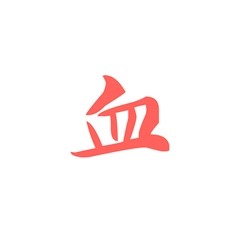
Blood (Xue) is one of Chinese Medicine's vital subtances. Learn more about Blood in Chinese Medicine
Blood Stagnation
Pulse type(s): Choppy (Se), Firm (Lao), Wiry (Xian)
Tongue color: Reddish-Purple
Symptoms: Lumps Tremor Numbness Dark face Dizziness Purple lips Purple nails Blotchy skin Restlessness Itching scalp Painful period Abdominal mass Scanty periods Abdominal pain Abdominal masses Skin capillaries Hesitant periods Tendency to bleed Premenstrual pain Dark colored blood Traumatic swelling Shoulder stiffness Absence of menstruation Boring fixed stabbing pain Frequent bleeding episodes Dark clots in menstrual blood Abdominal distention and fullness
Tao Hong Si Wu Tang is sometimes prescribed by TCM practitioners to treat Blood Stagnation. This pattern leads to symptoms such as dark face, purple lips, boring fixed stabbing pain and abdominal masses. Patients with Blood Stagnation typically exhibit choppy (Se), firm (Lao) or wiry (Xian) pulses as well as Purple tongue .
Blood Stagnation - also often referred to as "Blood Stasis" - is where the Blood flow is heavily restricted in all or parts of the body. It is one of the most important diagnostic conditions in Chinese Medicine because it is frequently the cause of intractable pain syndromes anywhere in the... read more about Blood Stagnation
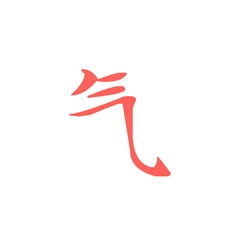
Qi is one of Chinese Medicine's vital subtances. Learn more about Qi in Chinese Medicine
Qi And Blood Stagnation
Pulse type(s): Choppy (Se), Deep (Chen), Fine (Xi)
Symptoms: Insomnia Dark face Moodiness Dizziness Chest pain Depression Amenorrhea Purple lips Mood swings Breast pain Hot flushes Purple nails Irritability Blotchy skin Restlessness Breast lumps Restlnessness Chest fullness Painful period Scanty periods Clots in blood Abdominal pain Abdominal masses Lochia retention Breast distention Dark colored blood Abdominal fullness Intense period pain High blood pressure Swelling of the feet Lower abdominal pain Dark menstrual blood Flooding and leaking Abdominal distension Pre-menstrual tension Black and tarry stools Irregular menstruation Boring fixed stabbing pain Pre-menstrual irritability Dark clots in menstrual blood Menstruation decreases gratually Feeling of fullness in the chest Abdominal distention and fullness Pain relief after clots discharge
Tao Hong Si Wu Tang is sometimes prescribed by TCM practitioners to treat Qi And Blood Stagnation. This pattern leads to symptoms such as chest fullness, chest pain, boring fixed stabbing pain and dark face. Patients with Qi And Blood Stagnation typically exhibit choppy (Se), deep (Chen) or fine (Xi) pulses.
The typical symptoms of Qi stagnation are distension, oppression and swelling. There are also emotional issues like mood swing, depression or irritability. However, the Blood Stagnation is more on pains and purple color manifestation on skin, face, lips and nails.
Qi Stagnation can cause the... read more about Qi And Blood Stagnation

Blood (Xue) is one of Chinese Medicine's vital subtances. Learn more about Blood in Chinese Medicine
Blood Deficiency and Stagnation
Pulse type(s): Choppy (Se), Fine (Xi), Wiry (Xian)
Tongue color: Pale
Symptoms: Insomnia Dizziness Amenorrhea Palpitations Blurred vision Muscle tension Lower abdominal pain Irregular menstruation Thin body lacking strength Generalized muscle tension Lusterless complexion and nails
Tao Hong Si Wu Tang is sometimes prescribed by TCM practitioners to treat Blood Deficiency and Stagnation. This pattern leads to symptoms such as dizziness, blurred vision, lusterless complexion and nails and muscle tension. Patients with Blood Deficiency and Stagnation typically exhibit choppy (Se), fine (Xi) or wiry (Xian) pulses as well as a pale tongue.
Formulas similar to Tao Hong Si Wu Tang
Si Wu Tang is 67% similar to Tao Hong Si Wu Tang
Sheng Yu Tang is 67% similar to Tao Hong Si Wu Tang
Shen Qi Si Wu Tang is 67% similar to Tao Hong Si Wu Tang
Ren Shen Zi Xie Tang is 57% similar to Tao Hong Si Wu Tang
Bu Yang Huang Wu Tang is 57% similar to Tao Hong Si Wu Tang
Bu Gan Tang is 57% similar to Tao Hong Si Wu Tang





